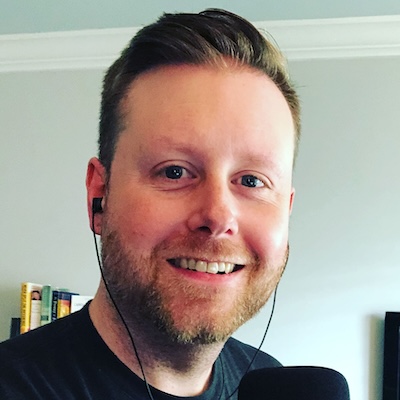Elder Isolation and Loneliness, not An American Problem Alone The SeniorScape™
The need for social connection and the benefits of intergenerational Relationships is undisputed. The success of innovative programs to address these issues is no more evident than in the Japanese Solutions to elder isolation and loneliness.
According to New York Times article, In rural areas, like the remote mountain village Nagoro, the last child was born 18 years ago. The low birth rate, combined with fewer and fewer opportunities for Employment, has found the younger generation migrating to larger cities. This particular village is not atypical. Where there was a medical clinic, a diner, and even a gambling parlor, all evidence of the small village is now gone, there is not one shop to be found and in 2012 the elementary school closed its doors.
One woman brought the school back to life in a most unusual way. How? by creating more than 40 handmade and lifelike dolls all around the school grounds. She’s even recreated a school sports day known as “unkokai” by creating child-sized dolls posed in footraces, tossing balls, or perched on a swing set.
“We never see children here anymore,” said Ms. Ayano, who was born in Nagoro, and has staged an annual doll festival for the last seven years.
As of now, there are 350 dolls which outnumber the living residents by more than 10 to The dolls, are fashioned from wood and wireframes, stuffed with newspapers, and dressed in old clothes which have been donated from across the country. They depict scenes from the villagers who lived in the village years earlier.
The population of Japan is Aging rapidly. In 2021, the number of people aged 65 and above, considered elderly by Japanese standards, made up 29.1% of the entire population, which according to statistics is the highest in the entire world. This has resulted in a rise in the number of Nursing homes; raising to 15,956 in 2020, up by over 800 from the previous year. This increase in the number of nursing homes will obviously require an increase in staff workers.
The Ichoan Nursing Home in the Southern Japanese city of Kitakyushu, finding itself in similar circumstances to the rest of japan where families have shrunk in size while the older population has increased in size, saw an increase in the number of people living in nursing homes. From 2005 to 2020 it doubled in size, reaching almost 2 million. And as in the United States where many older adults live in nursing homes, life can be isolating, lonely and mundane.
The solution for the Ichoan Nursing Home is quite different than for the village of Nagoro. The nursing home is filled with real life. The liveliness of laughter, giggling, cooing, and the pitter patter of little feet, is that belonging to babies and toddlers. They are called “baby workers”
To date, there are 32 children under the age of 4 who spend time with residents, the majority of whom are octagenarians. They share conversations and hugs, and the children are “paid” in baby formula, and diapers. free baby photos and offered coupons for them and their parents at a nearby café.
There is ample research that social interactions and connections affect lower blood pressure, and reduce the risk of disease and mental decline, Depression, as well as untimely death. But there is also evidence that intergenerational relationships in particular evoke more conversation, and more smiling. It also been shown that in general, these relationships draw people to become more outgoing and willing to engage in conversation.
The oldest of the 120 residents of the nursing home is 101, while the youngest baby “worker” is only 2 months of age.
The nursing home director was inspired to start the program when she saw the resident’s reaction when one day she brought her newborn granddaughter to work with her.
Once signed up to be a “baby worker”, there are no specific schedule requirements. Each baby and their parent visit the nursing home based on their desire and preference. The amount of time they spend in the home is entirely up to them. The only requirement is that the baby’s parent assists the toddler as they stroll around the nursing home and interact with residents.
According to the New York Times one mother, Mika Shintani, said she signed up her daughter because she wanted her to encounter people beyond her immediate family and felt more comfortable taking her to a nursing home rather than to a park or a friend’s home. “My daughter was spending the majority of her days only interacting with me, so I thought seeing other faces would be good for her.”
In the United States, the folks at the Providence Mount St. Vincent nursing home in Seattle Washington have seen the positive effect this has on their residents since 1991 when they’ve been sharing their nursing home with a child care program for infants to toddlers up to 5 years of age.
In the over 50 nursing homes in which I’ve worked, I’ve seen what I’d call mostly feeble attempts in this area. It becomes, similar to a box checked off to satisfy a requirement but has little enduring meaning, similar to what I’ve seen with person-centered care or pet Therapy.
Children may come from a local school a few times a year to perform a few songs..I’ve even seen a nursery school graduation ceremony held in a nursing home. But this does foster opportunities for true and lasting connection and conversation.
How can we encourage communities and nursing homes to develop meaningful intergenerational programs? Older adult residents need to feel they are not isolated from the rest of society. they need to continue experiencing some normalcy of connection with children at many generational levels, especially if they are not fortunate enough to have family who live nearby, or in many cases, don’t have family at all. Children would most assuredly benefit from a connection with adults who are the repositories of history, who can give them perspective and share their experiences.
Get YOUR FREE E-book of #1 Amazon Bestseller: Dignity & Respect: Are Our Aging Parents Getting What They Deserve at: www.freeagingparentbook.com
To read Phyllis Ayman’s latest chapter as coauthor in the USA Today and
WSJ #1 Bestseller grab a copy here: https://www.amazon.com/dp/B0B6WV351V/ref=cm_sw_r_sms_api_KBMMJDSRNA2DYZNQ6T37
To receive The SeniorScape÷™ to your inbox please email:
Phyllis@phyllisaymanassociates.com
Follow Phyllis Ayman on the podcast: SeniorsSTRAIGHTTalk at: https://www.voiceamerica.com/show/3911/seniors-straight-talk
Originally Published on https://www.phyllisaymanassociates.com/

























